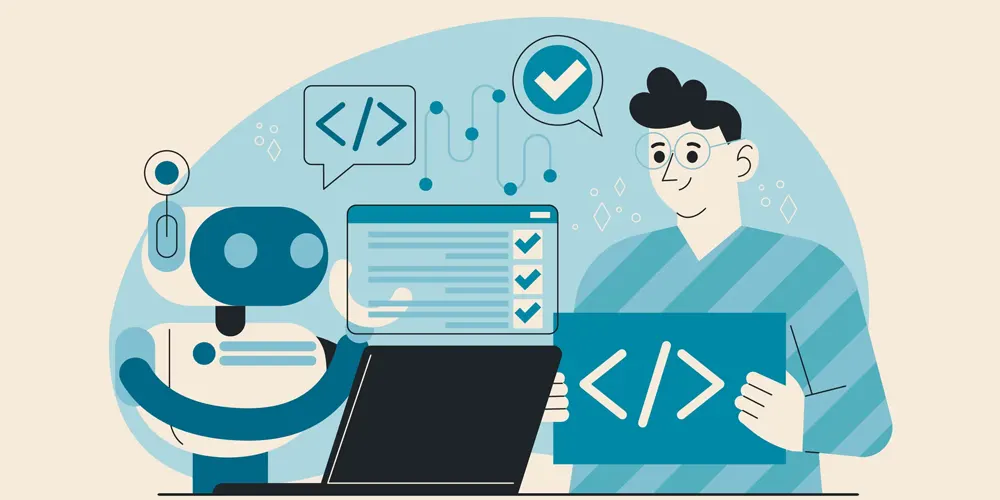5 Technologies Set to Revolutionise Webphones
One could say that the tech world somewhat resembles the Marvel Cinematic Universe or maybe it was the MCU who took inspiration from it. You must be aware of how superheroes in the MCU make surprise appearances in other superhero movies.
The same is true for technologies as well. You have AI making cameos in ML and the other way around. Then you have blockchain technology almost everywhere like Stan Lee just not as subtle or welcoming.
The point is, every technology helps improve others at some point in time. In recent years, web phones have taken centre stage thanks to so many preferring to work remotely or from home.
As a result, new technologies have started to flock around web phones. The question we now have is what are the most promising among these technologies and how are they set to improve web phones.
We will be taking a look at these technologies and discussing how they improve web phones in this article.
Let’s begin then, shall we?
1. Artificial Intelligence (AI) Integration

Seems like yesterday when Apple announced Siri and we got a sweet taste of how AI would be transforming our lives in the future. Fast forward to 2023 and we have ChatGPT, Bard and Bing taking up the headlines every other day.
Artificial Intelligence (AI) is a rapidly evolving field. It won't be long before we have AI handling all our communication via web phones. With AI, it's fair to expect tremendous improvements in terms of performance, functionality and user experience.
One of the most common uses of AI in web phones is through personal assistants, such as Siri, Google Assistant, and Alexa. These assistants use natural language processing and machine learning algorithms to manage communication.
What does this mean for you? You won’t have to answer calls from pesky insurance salesmen. You can just have your AI assistant answer calls and note down the details of the discussion for you to review later.
AI is also used in webphone cameras to recognize faces, objects, and scenes, and adjust camera settings accordingly.
Additionally, some web phones use AI to enhance image quality, reduce noise, and add special effects. I'm sure you don't want your clients to see the pile of laundry you’re yet to fold while on the video call.
Voice recognition is another area where AI is being used in web phones. AI-powered voice recognition technology enables voice-based commands and searches.
Moreover, AI is better at recognizing different accents and dialects, improving accuracy over time as it learns from user inputs.
2. Augmented Reality (AR)

Unlike its other cousin, VR, AR technology has been successful at finding commercial applications and presenting viable use cases for the masses.
Augmented Reality (AR) technology is being used to enhance the utility of web phones. With AR, web phones can now provide a more interactive and immersive experience.
Perhaps the best application of this capability may prove to be the retail sector. The internet allowed people to shop from the comfort of their homes. However, the “retail” experience of going to the store and trying things out was still lacking.
Web phones powered by AR are promising to make up for this. The fashion retail industry stands to gain a lot from this capability. Soon users will be able to virtually try on clothes and check how they look in them.
The same is true for different shades of lipsticks and other beauty products. This should come as a big relief for all the men who won't have to sit outside the trail room for hours and wait for their partners to finalise a dress.
Fashion retail isn't the only industry that will benefit from AR-powered web phones. Basically, any industry that can visually show its products to customers in an immersive manner will benefit from this.
Two examples of such industries are real-estate and education. We’re long past the old days of having to imagine scientific concepts and phenomena. Blackboards have been replaced by smart displays in our classrooms and AR will take things further.
Distance learning will now become as effective and interactive as being in a classroom and learning with your peers. We won't even have to cut open frogs to learn more about anatomy for our biology practicals.
For real estate, it gets more lucrative. Developers will be able to provide tours of respective properties to potential buyers even before they’re built. Being able to experience the final property will also prove reassuring to the buyers.
All in all, web phones and AR have the most promises and capabilities to offer. Unlike VR, I'm more confident that AR will prove to be more useful.
3. Blockchain Technology

No, I'm not a crypto bro trying to stick blockchain technology with every other tech possible. So hear me out as this technology might actually prove to be useful when bundled with web phones.
We won’t be diving into what blockchain technology is in this article. There are a lot of people out there trying to explain it to you. Just be careful not to invest in crypto or buy any fancy NFTs.
Now onto the viable use cases of blockchain technology when bundled with web phones. Identity spoofing is a big scam these days. Unsuspecting users have lost a lot to such scams, one even losing £20,000 in a single call.
While a lot of measures are in place to prevent this, scammers have been successful at circumventing these measures. So where does blockchain technology come in? The identity verification capabilities of a blockchain are unparalleled.
Using this technology, you can authorise the use of phone numbers and ensure only the right people can place calls. Thus, no scammers will be able to spoof your caller ID and scam your close ones or customers.
This is especially useful for businesses that handle or manage a lot of financial transactions and sensitive information.
Another very useful use case is conducting elections or any activity that requires voting. No, I'm not proposing we conduct general elections of global economies on the blockchain just yet. Maybe in the future though.
For now, we can just start with small things. This could be conducting voting for a decision about parks in your local community or deciding other similar things.
We can then extend these capabilities over to the corporate world and allow shareholders to vote on decisions about a particular business.
Once we have consolidated these use cases, we can maybe think about shifting democratic processes onto the blockchain.
With web phones, all of this becomes effortless as blockchain technology provides both identity verification and transparent voting. All of this from the comforts of your home.
See? There’s more to blockchain than just cryptocurrencies and NFTs! In case you felt something was missing, yes, you may also be able to send and receive cryptocurrencies and NFTs using web phones too!
4. Edge Computing

Cloud computing revolutionised the tech world in its initial days. However, as the years progressed, a lot of flaws in it were highlighted. Sure, cloud computing is still very powerful but it's not useful to everyone.
The major concerns surrounding cloud computing are privacy, data security and accessibility. The idea of “remote work” has been all the rage in recent years. However, we still can’t go to an actual remote place where our business might need us.
Thus, any business solutions deployed using cloud technology become useless without a good internet connection. This is where web phones powered by edge computing step in to solve all the issues.
First of all, edge computing brings all the necessary processing power to the end user. This eliminates the need to have a fast and stable internet.
Thus, if your business needs you to be in remote places and work, you can. You will also have good communication facilitated by the webphone.
Moreover, as everything required in terms of data and software are already present on the webphone, you won't have to deal with high latency. Faster response times and a smoother function equate to an exceptional user experience.
Edge computing powered web phones also eliminate a lot of security risks that plague cloud computing. Cloud computing requires a lot of data to be transported from the edge to the central data hub. This leaves it vulnerable to data breaches and interception.
None of these risks exist with edge computing powered web phones as all data is stored and used locally. This can drastically improve the experience and security of services such as mobile banking and healthcare in remote areas.
Finally, all the processing power is available at the edge and not subject to any network disruptions. This means users can run heavy technologies such as AR without any disruptions and network dependence.
It's fair to say that these technologies will make web phones more capable and provide a higher utility than we can imagine at this moment in time.
5. Machine Learning (ML)

Machines aren't the only ones learning. In fact, I had to learn a lot about ML myself and do a tonne of research to bring this article to you!
As the name implies, machine learning involves machines working on tasks and learning from their experiences and improving their operations gradually. This allows machines to understand patterns, even behavioural ones, establish relationships, correlations and causations for various processes and occurrences.
Wondering how web phones will make use of machine learning? Let’s just say ML will make web phones smarter than they will be even with AI.
The biggest benefit of this is going to be the improving natural language processing capabilities of smart assistants in web phones. Every non-native English speaker has faced problems while interacting with AI assistants.
ML will allow these AI assistants to be able to understand different accents and dialects of a single language. Thus, technologies can become more inclusive with the use of ML. With that issue solved, more people will make productivity gains by leveraging AI.
A lot of simple tasks and queries will be handled by users by just speaking to the AI assistant.
Another big gain ML will grant web phones and communication comes in the way of enhanced security and privacy. With ML, a webphone will be able to detect and thwart any scams from happening.
Additionally, ML will enable web phones to offer extensive personalization without undermining the privacy of a user at any level. So rest assured, you would be able to browse anything you want to check without being bombarded with ads about it later.
Finally, ML will enable AI assistants to be more capable of understanding your needs and adjusting to your routine. Thus, AI assistants will now feel more like having a proper personal assistant who knows everything about you and helps you with everything.
The only thing I will hope for is for the AI Assistants to be as pretty as Scarlett Johanson was in the movie HER.
With that, we’re at the end of our list and hopeful wishing. So let’s conclude!
Ending With
Web phones are powerful and have a lot of benefits to offer to businesses. So much so that we’ve already covered these in a blog article.
While they’re quite capable in their present state, we have a lot to look forward to. New technologies are making their way into web phones. These technologies are surely going to transform not just web phones but the business and communication landscape as well.
For now, we can wait and hope our future looks more like what the Jetsons had and less like the one in Terminator or The Matrix.
























































































































